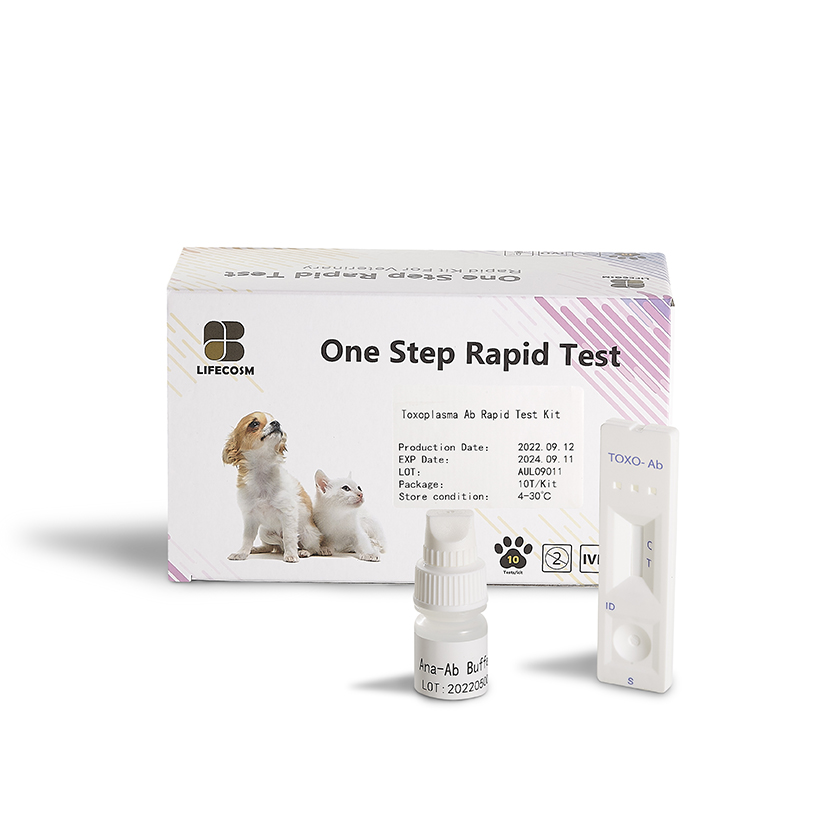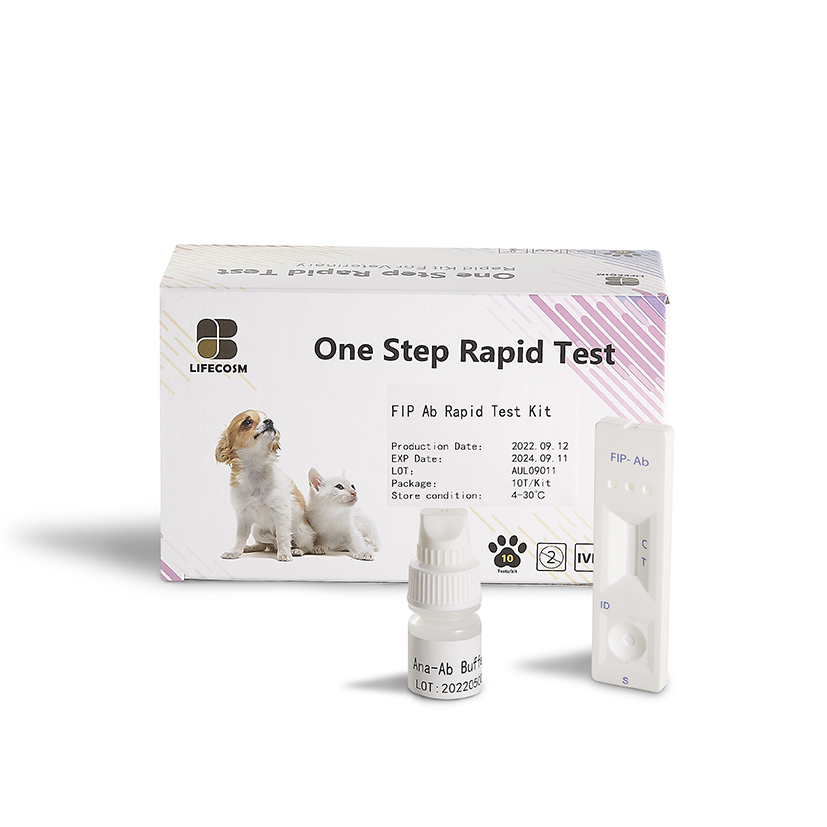
Products
Lifecosm Canine Babesia gibsoni Ab Test Kit for veterinary use
Canine Babesia gibsoni Ab Test Kit
|
Canine Babesia gibsoni Ab Test Kit |
|
| Catalog number | RC-CF27 |
| Summary | Detect the antibodies of Canine Babesia gibsoni antibodies within 10 minutes |
| Principle | One-step immunochromatographic assay |
| Detection Targets | Canine Babesia gibsoni antibodies |
| Sample | Canine Whole Blood, Plasma or Serum |
| Reading time | 10 minutes |
| Sensitivity | 91.8 % vs. IFA |
| Specificity | 93.5 % vs. IFA |
| Limit of Detection | IFA Titer 1/120 |
| Quantity | 1 box (kit) = 10 devices (Individual packing) |
| Contents | Test kit, Tubes, Disposable droppers |
|
Caution |
Use within 10 minutes after openingUse appropriate amount of sample (0.01 ml of a dropper)
Use after 15~30 minutes at RT if they are stored under cold circumstances Consider the test results as invalid after 10 minutes |
Information
Babesia gibsoni is recognized that cause canine babesiosis, a clinically significant hemolytic disease of dogs. It is considered to be a small babesial parasite with round or oval intraerythrocytic piroplasms. The disease is transmitted naturally by ticks, but transmission by dog bites, blood transfusions as well as transmission via the transplacental route to the developing fetus have been reported. B.gibsoni infections have been identified worldwide. This infection is now recognized as a serious emergent disease in small animal medicine. The parasite has been reported in various regions, including Asia., Africa, the Middle East, North America and Australia3).

Fig. 1. Ixodes scapularis is commonly known as the deer tick or black-legged tick. This ticks can transmit B. gibsoni into dogs by bite1).

Fig. 2. Babesia gibsoni within red blood cells2).
Symptoms
Clinical symptoms are variable and are mainly characterized by remittent fever, progressive anemia, thrombocytopenia, marked splenomegaly, hepatomegaly, and in some cases, death. The incubation period varies between 2-40 days depending on the route of infection and number of parasites in the inoculum. Most recovered dogs develop a state of premunition that is a balance between the host’s immune response and the parasite’s ability to induce clinical disease. In this state, dogs are at risk of recrudescence. Treatment is not effective in eliminating the parasite and recovered dogs commonly become chronic carriers, becoming a source for transmission of the disease via ticks to other animals4).
1)https://vcahospitals.com/know-your-pet/babesiosis-in-dogs
2)http://www.troccap.com/canine-guidelines/vector-borne-parasites/babesia/
3)Infectious diseases in dogs rescued during dogfighting investigations. Cannon SH, Levy JK, Kirk SK, Crawford PC, Leutenegger CM, Shuster JJ, Liu J, Chandrashekar R. Vet J. 2016 Mar 4. pii: S1090-0233(16)00065-4.
4)Detection of Babesia gibsoni and the canine small Babesia ‘Spanish isolate’ in blood samples obtained from dogs confiscated from dogfighting operations. Yeagley TJ1, Reichard MV, Hempstead JE, Allen KE, Parsons LM, White MA, Little SE, Meinkoth JH. J. Am Vet Med Assoc. 2009 Sep 1;235(5):535-9
Diagnosis
The most accessible diagnostic tool is the identifying of diagnostic symptoms and microscopic examination of Giemsa or Wright’s-stained capillary blood smears during acute infection. However, the diagnosis of chronically infected and carrier dogs remains a significant challenge due to very low and often intermittent parasitemia. The Immunofluorescence Antibody Assay (IFA) test and ELISA test can be used to detect the B. gibsoni but these tests require a long time and the high expenses for execute. This rapid detection kit provides an alternative rapid diagnostic test with good sensitivity and specificity
Prevention & Treatment
Prevent, or reduce exposure to the tick vector by utilization of registered long-acting acaricides with continuous repel and kill activities (e.g. permethrin, flumethrin, deltamethrin, amitraz), according to labelled instructions. Blood donors should be screened and found free of vector- borne diseases, including Babesia gibsoni. Chemotherapeutic agents used for treatment of canine B. gibsoni infection are diminazene aceturate, phenamidine isethionate.










